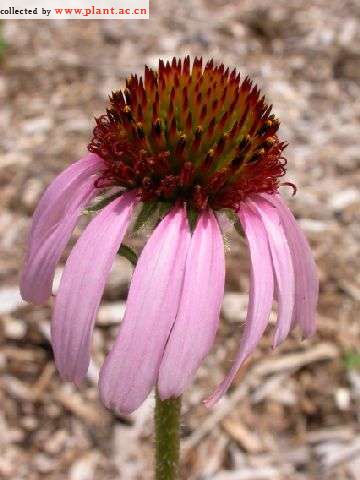Echinacea tennesseensis Rocky TopTennessee coneflower
Family:Asteraceae
common name:Tennessee coneflower
introduce:Plant Type: Herbaceous perennial
Family: Asteraceae
Missouri Native: No
Native Range: None
Height: 2 to 2.5 feet
Spread: 1.5 to 2 feet
Bloom Time: June - August
Bloom Color: Pink rays and blackish cone
Sun: Full sun to part shade
Water: Dry to medium moisture
Maintenance: Low
General Culture:
Easily grown in average, dry to medium moisture, well-drained soils in full sun to part shade. Best in full sun. This is an adaptable plant that is tolerant of drought, heat, humidity and poor soil. Divide clumps when they become overcrowded (about every 4 years). Plants usually rebloom without deadheading, however prompt removal of spent flowers improves general appearance. Although 慠ocky Top?may be originally planted from seed (it is a seed variety), it may not come true from self-seeding in the garden.
Noteworthy Characteristics:
慠ocky top?is a Tennessee coneflower seed cultivar that typically grows to a compact 24-30?tall. It features daisy-like coneflowers (2-3?diameter) with well-spaced, upward-turned pink rays and black central cones. Flowers bloom from June to August with some sporadic later bloom. The upturned ray flowers of E. tennesseensis distinguish this species from other echinaceas which generally have reflexed ray flowers. Narrow, lanceolate, dark green leaves (3-5?long). The dead flower stems will remain erect well into winter and, if flower heads are not removed, may be visited by goldfinches looking for seed. Echinacea comes from the Greek word 揺chinos?meaning hedgehog in reference to the flower抯 spiny center cone. E. tennesseensis (see R430) is only known to exist naturally on certain glades near Nashville, Tennessee, and is on the Federal Endangered Species List.
Problems:
No serious insect or disease problems. Japanese beetle, powdery mildew and leaf spot are occasional problems.
Uses:
Borders, meadows, cottage gardens, native plant gardens or part shade areas of open woodland gardens.
